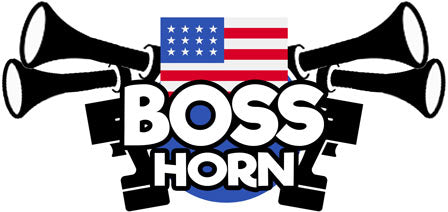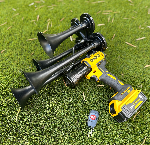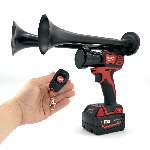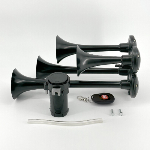Trains have long played a vital role in transportation, carrying goods and people across vast distances. From their inception in the early 19th century, trains have relied on auditory signals to maintain safety and communicate with those in their vicinity. This need gave birth to a unique and recognizable sound that is instantly associated with trains and their operations.
Initially, train operators communicated through manual signaling methods, such as waving flags or using lanterns at night. While effective, these methods were limited in range and sometimes prone to misinterpretation. As train travel expanded and the need for efficient communication grew, the steam-powered locomotive introduced an innovative solution that revolutionized the industry - the train whistle. Emitting a powerful blast, the whistle became the primary means of signaling to other trains, railroad workers, and even the general public.
Over time, the distinctive sound of the train whistle has become deeply ingrained in popular culture. It has been featured in countless movies, songs, and literature, often symbolizing adventure, freedom, or even impending danger. The sheer power and reverberation of the whistle can evoke a sense of excitement, nostalgia, and urgency all at once.
Beyond its cultural significance, the train whistle serves a practical purpose in ensuring the safety of train operations. Trains are massive and heavy machinery, and their ability to stop quickly is limited. The whistle's loud and distinctive sound warns pedestrians, motorists, and railway workers of an approaching train, allowing them to clear the tracks or take necessary precautions. In fact, studies have shown that accidents at railway crossings significantly decrease in areas where train whistles are used as a warning system.
Despite its crucial role, the train whistle has also faced criticism over the years. Some individuals living in close proximity to railway tracks find the sound disruptive and noise pollution. In response to these concerns, various solutions, such as wayside horns, have been developed. These horns are stationed at specific locations along the tracks and emit the required warning sound, reducing the need for train whistles near residential areas.
In conclusion, the train whistle encompasses both rich history and practicality. Its distinctive sound not only signifies the presence and movement of trains but also holds a special place in our cultural imagination. While some desire its reduction, the train whistle remains an essential auditory signal for the safety and efficient operation of trains.
What are the implications and unexplored benefits of the train whistle blowing practice?
The train whistle blowing is a customary practice that involves the blowing of a whistle by a train conductor to indicate various messages or warnings. This unique and distinct sound has been an integral part of the railway transportation system for many years. It serves as an essential communication tool between train operators, pedestrians, and motorists. The train whistle blowing serves multiple purposes, such as warning individuals of an approaching train, signaling departure or arrival, and alerting employees or passengers about any emergencies or critical situations. Furthermore, its historical significance adds cultural charm to the railways. In the subsequent sections, we will delve into the advantages and impacts of train whistle blowing in more detail.
Train Whistle Blowing: Exploring the Impact and Regulations
Trains have been an essential mode of transportation for centuries, connecting people and goods across vast distances. However, with their immense size and weight, trains pose significant safety risks, both for those on board and those near railway tracks. As a safety measure, train operators rely on a distinct auditory signal known as whistle blowing. This article delves into the significance of whistle blowing, the regulations surrounding it, and its impact on communities.
The Purpose of Whistle Blowing
Train whistle blowing serves various essential purposes in maintaining safe rail operations. Primarily, it acts as a warning system to alert individuals of an approaching train. Due to their massive size and speed, trains require a significant distance to come to a complete stop, making it crucial for pedestrians, vehicles, and other trains to be aware of their presence. The loud and distinctive sound of a train whistle cuts through ambient noise and effectively signals that a train is nearby.
This audible warning also helps prevent accidents and collisions. Whether it's at a level crossing or an area with limited visibility, the sound of the train whistle serves as a reminder to exercise caution and respect the railway environment. By drawing attention to the presence of a train, whistle blowing allows individuals to take necessary safety precautions, reducing the risk of accidents and potentially saving lives.
The Regulations Surrounding Whistle Blowing
While whistle blowing plays a vital role in railway safety, its usage is strictly regulated to ensure a balance between safety and noise pollution. In many countries, regulatory bodies enforce guidelines that dictate when and where train whistles should be blown.
Specific regulations vary, but generally, train operators are required to sound the whistle in the following situations:
- At road crossings to alert motorists and pedestrians.
- Approaching train stations or platforms.
- In response to signals from railroad employees.
- When an emergency or potential danger is detected.
However, in some areas, quieter alternatives such as horns or bells are used during daytime hours to minimize noise disturbances for nearby communities.
The Impact on Communities
Train whistle blowing is not without controversy, particularly concerning its impact on the quality of life for those living near railway tracks. The loud noise produced by the whistle can disrupt sleep patterns, cause annoyance, and affect the overall well-being of individuals residing in the vicinity.
To address these concerns, many communities actively work with railway operators and local authorities to implement designated quiet zones. These zones are areas where train whistles are not routinely blown, reducing noise pollution during specific times, such as late at night or early in the morning. Quiet zones typically incorporate elevated safety measures such as additional signage, crossing gates, or improved track infrastructure to compensate for the absence of whistle blowing.
Statistics:
- In the United States, over 2,000 communities have established quiet zones along railroad tracks to limit train whistle noise.
- A study conducted in Canada found that noise complaints related to train whistle blowing have decreased by 75% in areas with designated quiet zones.
- According to a report by the European Environmental Agency, noise from train whistle blowing is one of the most significant environmental burdens faced by urban residents.
https://youtube.com/watch?v=IKFn3JKJ-j4
Frequently Asked Questions about Train Whistle Signals
1. What auditory signals are used to communicate train movements?
- Auditory signals in the railway system serve as a crucial means of communication between trains and pedestrians or motorists. By understanding these signals, individuals can ensure their safety around train tracks.
Three important pieces of information:
- Train whistle signals are used to alert pedestrians and motorists of an approaching train.
- Other signals, such as bells and horns, are used to indicate train movements and provide warnings.
- By recognizing and understanding these auditory signals, individuals can make informed decisions when near railway tracks.
2. How are train whistle signals used to indicate approaching trains?
- Train whistle signals play a vital role in signaling the presence of an approaching train. Understanding these signals can help pedestrians and motorists take appropriate actions to ensure their safety.
Three important pieces of information:
- Train whistle signals are typically a series of short blasts, repeated or prolonged, to indicate the approach of a train.
- The intensity and duration of the whistle can differ based on various factors, including train speed and track conditions.
- When hearing a train whistle, individuals should never assume that they are safe and should remain cautious and alert until the train has passed.
3. What does a train whistle signal indicate when a train is departing a station?
- Train whistle signals are not solely used to indicate the approach of a train; they also serve as a means to communicate train departures. Understanding these signals can provide valuable information to pedestrians and motorists near railway stations.
Three important pieces of information:
- When a train is departing a station, the train whistle signal typically consists of a series of long blasts that may last up to 30 seconds.
- The purpose of these long blasts is to alert individuals to a departing train and indicate that it is moving away from the station.
- Pedestrians and motorists should exercise caution and refrain from crossing tracks when they hear a train whistle signal indicating a departure.
4. How are train whistle signals used at railroad crossings?
- Train whistle signals play a crucial role in ensuring the safety of motorists at railroad crossings. Understanding these signals enables individuals to make informed decisions and prevent potentially hazardous situations.
Three important pieces of information:
- At railroad crossings, train whistle signals are typically required by law to be sounded in advance.
- These signals consist of a long blast followed by two short blasts, a pause, and then one final short blast.
- Motorists should never attempt to cross a railroad crossing when they hear a train whistle signal, as it indicates the presence of an approaching train.
5. Are there any specific regulations regarding train whistle signals?
- Various regulations and guidelines exist to govern the use of train whistle signals. Familiarizing oneself with these regulations is essential for ensuring safety around railway tracks and crossings.
Three important pieces of information:
- Train whistle signal regulations may vary between jurisdictions, so it is important to be aware of the specific rules in your area.
- These regulations often outline when and where train whistle signals are required, and the specific patterns and durations of the signals.
- Violating train whistle signal regulations can result in penalties and compromise the safety of both individuals and the train operators.
Conclusion
In conclusion, the train whistle blowing serves as a crucial signal in the world of rail transportation. It is a safety measure that alerts pedestrians, motorists, and workers of an approaching train, preventing potential accidents. The precise timing and pattern of the whistle blows provide valuable information to train personnel and communities near the tracks. Train whistles also have historical significance, representing a nostalgic symbol of America's industrial past. While there have been debates regarding noise pollution and the need for regulation, the train whistle continues to play an essential role in ensuring the safety and efficiency of train operations.











 https://bosshorn.com
https://bosshorn.com

























































